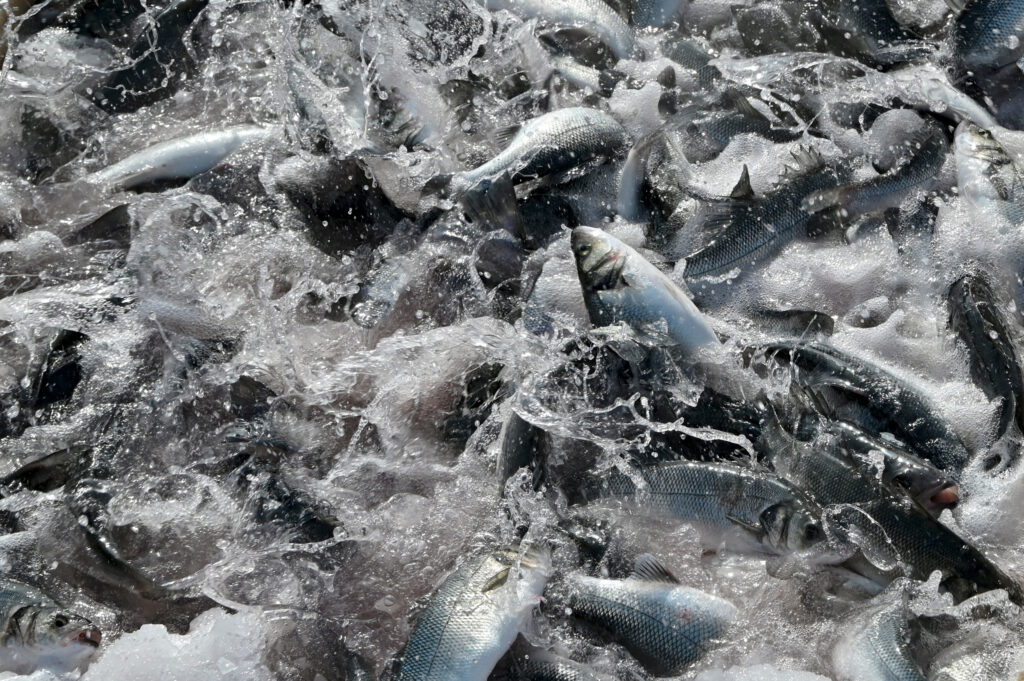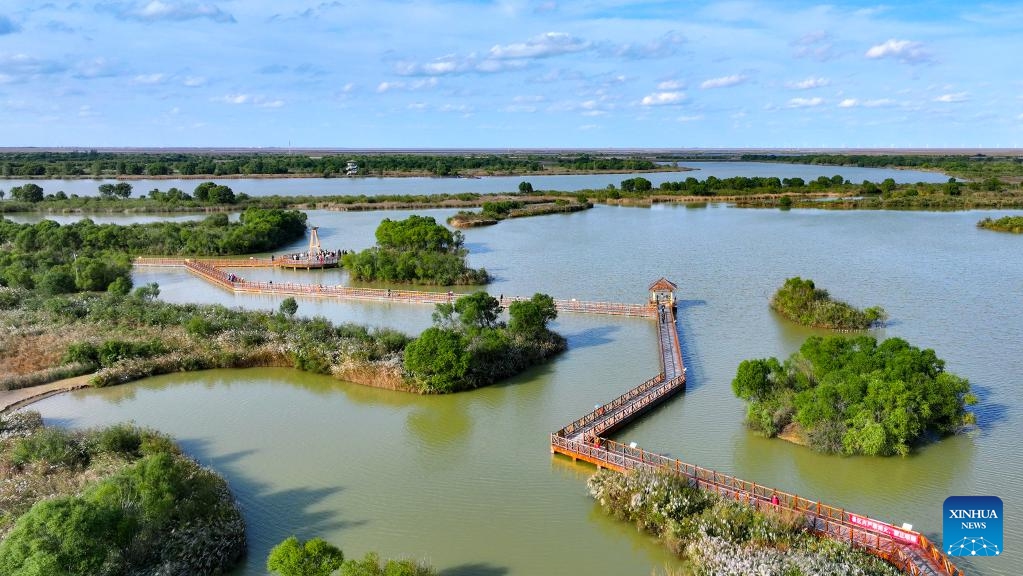Australia criticises ‘lost opportunity’ for strengthened Antarctic conservation – Australian Broadcasting Corporation
Report on the Outcomes of the Commission for the Conservation of Antarctic Marine Living Resources (CCAMLR) Annual Meeting
Executive Summary: Setback for Sustainable Development Goals
The annual meeting of the Commission for the Conservation of Antarctic Marine Living Resources (CCAMLR) concluded without consensus on critical conservation measures, representing a significant lost opportunity for advancing the United Nations Sustainable Development Goals (SDGs). The failure to establish new Marine Protected Areas (MPAs) and update krill fishery management directly undermines international commitments to SDG 14 (Life Below Water), SDG 17 (Partnerships for the Goals), and SDG 13 (Climate Action). The persistent vetoes by China and Russia have stalled progress on protecting one of the world’s most vital marine ecosystems.
Failure to Achieve Consensus on Key Conservation Measures
Despite two weeks of negotiations among the 27 member states, key proposals aimed at strengthening the conservation of the Southern Ocean were blocked. This outcome jeopardizes several targets within the 2030 Agenda for Sustainable Development.
Implications for Sustainable Development Goal 14: Life Below Water
- Target 14.2 (Protecting Marine Ecosystems): The proposal to establish new MPAs, particularly over the Antarctic Peninsula, was designed to protect key breeding and foraging habitats. The failure to reach consensus prevents the sustainable management and protection of this vulnerable marine ecosystem.
- Target 14.4 (Sustainable Fishing): Proposed updates to regulate the spatial distribution of krill fishing were intended to prevent overfishing in concentrated areas. The lack of agreement means the Antarctic krill fishery continues to operate without these essential safeguards, as evidenced by the unprecedented early closure of the fishery in August after the 620,000-tonne catch limit was reached.
- Target 14.5 (Conserve Marine Areas): The inability to designate new MPAs is a direct failure to advance the global goal of conserving marine areas, a cornerstone of SDG 14.
Challenges to SDG 17: Partnerships for the Goals
The CCAMLR operates on a consensus basis, making international cooperation essential for progress. The repeated blocking of conservation measures by China and Russia highlights a critical failure in multilateral partnerships, which are fundamental to achieving all SDGs.
- Lack of Consensus: The actions of two member states have continuously prevented the 27-member body from adopting scientifically advised conservation measures.
- Erosion of International Regimes: Experts note that such actions undermine the principle of good faith participation in international environmental governance frameworks like CCAMLR.
- Geopolitical Tensions: The geopolitical climate was cited as a complicating factor in the complex international negotiations, hindering collaborative efforts for global environmental stewardship.
Ecological Impact and Relevance to SDG 13: Climate Action
The conservation of Antarctic krill is not only crucial for marine biodiversity but also for global climate regulation. Krill are a keystone species in the Southern Ocean ecosystem and play a significant role in climate resilience.
- Ecosystem Stability: Krill form the base of the Antarctic food web, supporting populations of whales, penguins, and seals. The failure to protect krill populations threatens the entire ecosystem, contravening the holistic approach of the SDGs.
- Carbon Sequestration: Krill contribute to climate mitigation by transferring carbon from the ocean’s surface to its depths. Protecting their habitat and population is an important nature-based solution that supports SDG 13.
Stakeholder Reactions and Future Outlook
The outcome of the meeting drew criticism from multiple stakeholders, who called for more decisive action to align with global sustainability targets.
Key Positions:
- Australian Government: Expressed disappointment, terming the result a “lost opportunity” to advance the conservation of krill and the ecosystems they support.
- World Wildlife Fund (WWF): Called for a moratorium on all krill fishing until adequate safeguards and marine protections are enacted, aligning with the precautionary principle embedded in SDG 12 (Responsible Consumption and Production) and SDG 14.
- Antarctic and Southern Ocean Coalition (ASOC): While disappointed, noted positively that most member nations resisted pressure to increase catch limits without corresponding protection measures.
Despite the major setbacks, CCAMLR did adopt minor measures, including efforts to counter illegal fishing and increase data collection on by-catch. However, the core objectives for ecosystem-based management remain unfulfilled, posing a continued threat to the long-term health of the Antarctic marine environment and the achievement of the Sustainable Development Goals.
Analysis of Sustainable Development Goals in the Article
1. Which SDGs are addressed or connected to the issues highlighted in the article?
-
SDG 14: Life Below Water
- This is the most prominent SDG in the article. The entire text focuses on the conservation of marine life in Antarctica, specifically the failure to agree on measures to protect the marine ecosystem, regulate krill fishing, and establish marine protected areas. The article discusses the importance of krill as a “keystone” species for other marine animals like whales, penguins, and seals, directly linking to the goal of conserving and sustainably using the oceans and marine resources.
-
SDG 17: Partnerships for the Goals
- The article revolves around the negotiations and failures of the Commission for the Conservation of Antarctic Marine Living Resources (CCAMLR), an international body with 27 member states. The inability to reach a consensus due to vetoes from China and Russia highlights the challenges in global partnerships for sustainable development. The statement that countries are “being blocked constantly, continuously, by two countries who refuse to negotiate” is a direct commentary on the breakdown of this partnership.
-
SDG 13: Climate Action
- The article connects the conservation issue to climate change by noting that krill “play an important role in transferring carbon from the ocean’s surface to its depths” and that the species is “being increasingly impacted by climate change.” This links the health of the Antarctic marine ecosystem to broader climate action goals.
2. What specific targets under those SDGs can be identified based on the article’s content?
-
Under SDG 14 (Life Below Water):
- Target 14.2: “By 2020, sustainably manage and protect marine and coastal ecosystems to avoid significant adverse impacts…” The push for “strengthened conservation measures,” the establishment of “marine protected areas,” and the concern for protecting the “vulnerable Antarctic ecosystem” directly align with this target. The failure to agree on these measures represents a failure to meet this target.
- Target 14.4: “By 2020, effectively regulate harvesting and end overfishing, illegal, unreported and unregulated fishing…” The discussion about updating “rules for krill fishing,” the mention of the “catch limit of 620,000 tonnes,” and the adoption of a measure “to counter illegal, unreported and unregulated fishing” are all directly related to this target.
- Target 14.5: “By 2020, conserve at least 10 per cent of coastal and marine areas…” The central conflict in the article is the inability to reach consensus on proposed “new marine protected areas,” which is the primary mechanism for achieving this target in the region.
-
Under SDG 17 (Partnerships for the Goals):
- Target 17.14: “Enhance policy coherence for sustainable development.” The article describes a lack of policy coherence where most member states support conservation, but the vetoes by China and Russia prevent the implementation of sustainable policies, showing a clear conflict within the international regime.
- Target 17.16: “Enhance the Global Partnership for Sustainable Development…” The CCAMLR is an example of such a partnership. The article details its struggles and failures to achieve its conservation goals due to a lack of consensus, demonstrating the challenges faced in making these partnerships effective.
3. Are there any indicators mentioned or implied in the article that can be used to measure progress towards the identified targets?
-
Indicators for SDG 14 Targets:
- Coverage of Marine Protected Areas (MPAs): The primary point of contention is the failure to agree on “new marine protected areas.” The existence and geographical coverage of these protected areas serve as a direct indicator of progress towards Target 14.5.
- Krill Catch Volume: The article explicitly mentions the “catch limit of 620,000 tonnes” and the fact that it was reached “months earlier than normal.” The volume of krill caught against this scientifically advised limit is a quantitative indicator for Target 14.4.
- By-catch Data: The article mentions a new measure for “increased data on fish by-catch in the krill fishery” and refers to “incidental mortality” reports that revealed “two dead humpback whales, as well as an injured whale.” The number and species of non-target animals caught are a critical indicator of the sustainability of fishing practices (Target 14.4).
- Incidents of Illegal, Unreported, and Unregulated (IUU) Fishing: The adoption of a measure “to counter illegal, unreported and unregulated fishing” implies that the number of detected IUU fishing incidents is an indicator used to measure the effectiveness of regulatory enforcement (Target 14.4).
-
Indicators for SDG 17 Targets:
- Number of Countries Adopting International Conservation Measures: The article highlights that the 27 member states were “unable to reach consensus.” The number of countries that agree to and implement international environmental agreements like the proposed conservation measures is an indicator of the effectiveness of global partnerships (Target 17.16). The failure of two countries to agree demonstrates a negative outcome for this indicator.
4. Table of SDGs, Targets, and Indicators
| SDGs | Targets | Indicators Identified in the Article |
|---|---|---|
| SDG 14: Life Below Water |
14.2: Sustainably manage and protect marine and coastal ecosystems.
14.4: Effectively regulate harvesting and end overfishing and IUU fishing. 14.5: Conserve coastal and marine areas. |
|
| SDG 17: Partnerships for the Goals |
17.14: Enhance policy coherence for sustainable development.
17.16: Enhance the Global Partnership for Sustainable Development. |
|
| SDG 13: Climate Action | 13.3: Improve education and awareness-raising on climate change. |
|
Source: abc.net.au
What is Your Reaction?
 Like
0
Like
0
 Dislike
0
Dislike
0
 Love
0
Love
0
 Funny
0
Funny
0
 Angry
0
Angry
0
 Sad
0
Sad
0
 Wow
0
Wow
0




















































.jpg.webp?itok=0ZsAnae9#)



























